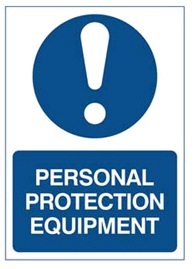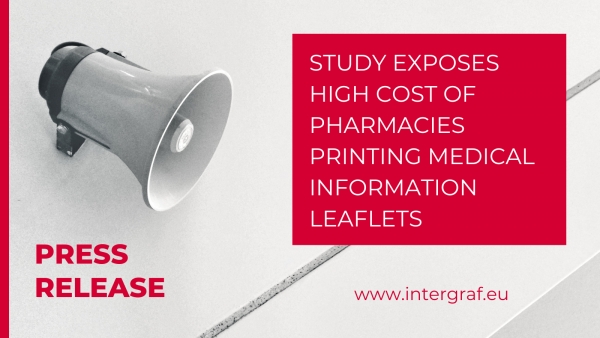18 February 2013

Personal Protective Equipment: how do you manage it?
Whatever size of production business you have, there is always a need for some Personal Protective Equipment (PPE) for operatives, but it is all too common to find it lying around the workplace. You may ask yourself; does anyone really know what they should be doing with the PPE and whether they have the correct control measures in place?
The PPE regulations came into force in January 1993 and have been amended a number of times. Personal protective equipment means all equipment that is intended to be worn or held by a person at work and is to protect them against a risk to their health or safety. But note, the regulations do not apply to ordinary clothes or uniforms unless to prevent contamination of the employee’s own clothing.
Under Section 9 of the Health and Safety at Work etc Act 1974, employers cannot charge the worker for providing them with PPE that is to be used at work. It states, "No employer shall levy or permit to be levied, any charge in respect of anything done or provided in pursuance of any specific requirement of the relevant statutory provisions" - i.e. to provide PPE.
In order to provide PPE for their employees, employers must do more than simply have the equipment on the premises. Employees must have the equipment readily available, and at the very least have clear instructions on where they can obtain it from.
Employers should provide appropriate personal protective equipment and training in its usage. Under the regulations, PPE should be the last resort and other means of controlling the hazard, should be considered first, i.e. engineering or safe systems of work.
The following example and in this case exposure to noise, where PPE is the last resort, the employer should be mindful that:
• It only protects the individual wearing it and does not reduce the noise levels around them.
• The maximum levels of protection are seldom achieved, for example, when you wear ear defenders and you are constantly taking them off, the connecting band stretches and can reduce the contact that is required.
• Effective protection is only achieved if it is correctly fitted and worn, it’s maintained and properly used.
Now this may seem very easy & straightforward, however if we take hearing protection as an example there are a number of things that you need to think about. What type of hearing protection do I need?
Employers must ensure that any PPE that they provide to their employees is maintained in an efficient working order and is in good repair. This means that the employer needs to provide information, instruction and training on:-
• How to check for faults, any damage, wear and tear
• How to ensure that the PPE is operating correctly
• How to clean and disinfect it appropriately, to ensure employees don’t have additional health problems (ear infections)
• How to repair and replace it when necessary
Generally this means that the PPE should be examined before being used and if damaged or passed its shelf life, then it must be replaced.
Also with the training, the employer will also need to inform the employee what the PPE is protecting them against: will the PPE limit or avoid the risk, and ensure that the employee will make effective use of the equipment? The training should have elements of theory as well as practical guidance on how to fit and wear it correctly.
When PPE has been issued there must be somewhere for it to be stored when it is not in use. The storage of the equipment must ensure that it prevents:-
• Damage from chemicals, accidental heat, sunlight
• Any contamination from dirt or hazardous substances
• Any form of abrasion or impact that could cause damage
This does not mean that the accommodation needs to be elaborate. It could be a simple carry case for safety spectacles, a peg for weatherproof clothing or a box for hearing protection.
Whatever PPE you provide, you must ensure that the equipment is properly assessed, to ensure that it is suitable for the operative and the task in question. You must also ensure that what you buy has CE markings and complies with the relevant requirements, so always purchase PPE from a reputable provider and avoid those 'car boot stalls'.
For further advice and guidance, please contact your local Health, Safety and Environmental Adviser.
 Intergraf Economic News (Paper Prices) - March 2024
Intergraf Economic News (Paper Prices) - March 2024
18 March 2024
Access the latest edition of the Economic Newsletter for the European Printing Industry for data on paper consumption, and pricing data for pulp, paper and recovered paper. Data for packaging papers and board is also available with this edition.
 STUDY EXPOSES HIGH COST OF PHARMACIES PRINTING MEDICAL INFORMATION LEAFLETS
STUDY EXPOSES HIGH COST OF PHARMACIES PRINTING MEDICAL INFORMATION LEAFLETS
7 March 2024
Intergraf welcomes the release of a study by our partner MLPS (Medical Leaflet = Patient Safety), a subgroup of the European Carton Manufacturers Association (ECMA) shedding light on the potential economic costs associated with the proposed use of Print on Demand (PoD) leaflets in the pharmaceutical legislation revision.
The BPIF is the printing industries champion. By becoming a member you join a diverse and influential community. We help you solve business problems, connect you to new customers and suppliers and make your voice heard in government.
Call 01676 526030









